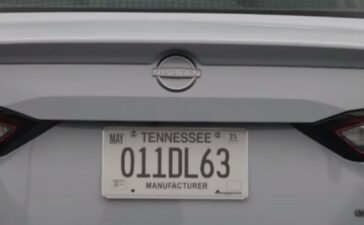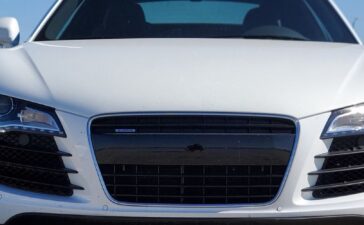Hello there, I’m Gavin J. Knox, the founder of Check Engine Light. If you have a problem with the illuminated check engine light, you refer to the correct place.
I’m going to provide you with guidance through it because I’ve been through this for a long time.
Is it possible to pass an emission test with engine light on? Obviously not. You can try tightening your gas cap to turn off the check light; As it’s a simple and common cause that triggers the check light. You should check the spark plugs as well. You can disconnect and reconnect your battery to turn off the light.
Just keep in mind that it isn’t wise to pass the emission test with a triggered check engine light.
Let’s see the solution to this problem and ways to turn off the check light.
You might also enjoy: Why Did My Traction Control And Check Engine Light Come On?
What is an Emission Test?
It’s the other name of the smog test. This test measures the amount of pollutant that gets out from the vehicle’s engine.
This test is done to firstly, ensure the car matches the government’s standards.
In these tests, levels of substances like hydrocarbons, nitrogen oxides, carbon monoxide, and carbon dioxide are checked and measured.
Based on your vehicle’s age and your region, special demands and the frequency of emission tests vary.
These tests are done to reduce the air pollution.
I’m both a car enthusiast and an environment advocate, and I think the emission tests help us a lot in keeping our air clean and ensuring our community health.
Common Reasons for A Check Engine Light and Emission Test Failure
4 Common Reasons for An On-Check Engine Light and Emission Test Failure
The check engine light is an indicator of a problem with your vehicle.
It’s one of the most important and major reasons for failing in emission tests.
We’re going to talk about common causes of an illuminated check engine light.
1- Faulty Oxygen Sensor
This sensor regulates the mixture of air and fuel effectively. If it fails, the wrong data will be sent to the car’s computer and this leads to higher emissions and insufficient combustion.
This is considered as the most important cause of the check engine light illumination. It significantly affects your vehicle’s performance and emission levels.
2- Malfunctioning Catalytic Converter
The catalytic converter reduces the harmful emissions and substances of your car’s exhaust. If it doesn’t work properly, the pollutants like nitrogen oxide and carbon monoxide will increase.
These pollutants will fail you in the emission test. You will often be informed about the faulty catalytic converter by the check light and if not, you will be failed in the emission tests.
3- Loose or Faulty Gas Cap
In the first place, it might seem like a minor problem, but a loose or failing gas cap can cause severe issues.
It will lead to vapor leaks and this means a triggered check engine light and increased emissions.
You might be failed in the emission test due to this simple but common cause.
4- Failed Mass Air Flow Sensor (MAF)
The mass air flow sensor is a vital component of the engine’s function.
It measures the amount of oxygen that enters the engine. A faulty (MAF) sensor can damage the balance of the air-fuel mixture.
So it will cause a rich run( too much fuel) or a lean (not enough fuel).
As a result of this, we will face higher emissions. This will trigger the check light and fail us in the emission test.
You might also enjoy: Chevy 2500 Bolt Pattern: Ultimate Guide [2023]
5 Pre-Test Preparations to Avoid Having a Check Engine Light On in Your Emission Test
We should try to be ready for regular emission tests because they ensure our cars are in their top condition. Before your emission test, you’d better follow these five tips:
1- Regular Vehicle Maintenance
This is the key to ensuring your car’s health.
You can keep your car in its best condition by regularly changing the oil, changing air filters, and checking the health of spark plugs.
These cares can prevent the check light from being triggered.
2- Check and Secure The Gas Cap
If the gas cap is lost or not tightened properly, leads to vapor leaks and triggers the check light.
So it’s wise to check and tighten it before going to the emission test.
If it’s doled or lost, make sure to replace it. It’s not a costly repair and can help you pass the emission test.
3- Inspect and Clean the Mass Air Flow Sensor
This sensor controls the balance of the air-fuel mixture.
If this sensor is dirty, it affects the balance of this mixture and this leads to an on check engine light.
You should clean the mass air flow sensor with its special cleaner to prevent the mentioned issue.
It’s a simple task and you can do it by yourself.
4- Examine the oxygen Sensor and Catalytic Converter
These 2 components play an essential role in a vehicle’s emission system.
If they fail, you will absolutely fail the emission test.
In case you have an OBD2 scanner, use it to search for error codes that relate to these parts and if not, ask a mechanic to help you with it.
5- Ensure the Battery is Properly Connected
Disconnecting the battery will reset the car’s computer system.
If you have disconnected and reconnected the battery recently, it might lead to some incomplete monitor tests.
These incomplete tests trigger the check engine light. Before heading to the emission test, ensure your battery is properly connected and the internal computer tests are done.
You might also enjoy: Jeep Check Engine Light: Causes And Solutions [2023]
What to Do if the Engine Light is On During the Emission Test (My 5 Steps Guide)
A triggered check engine light during an emission test is a concerning issue.
You can handle it with these five tips:
1- Remain Calm and Communicate With the Tester
It’s important to remain calm in the first place. Inform the technician about the light.
They are specialists and may give you useful advice.
2- Recall Recent Vehicle Behaviors and Repairs
You should address your car’s recent unusual behaviors.
By informing the tester about unusual car behaviors, you can provide clues about the reasons for the illuminated engine light.
3- Check for Simple Issues
You’d better do a quick visual check of your car’s engine. Search for obvious issues like a loose gas cap, or disconnected wires.
But keep in mind that most repair centers don’t allow extensive on-site repairs.
4- Consider the Test Center’s Advice
Most of the testers are experienced and familiar with emission systems and can provide you with useful advice.
They either give you immediate repair advice or ensure you this check light is common and doesn’t necessarily indicate a major issue.
5- Prepare for a Follow-up
If the check light leads to your failure in the emission test, ask the tester about their observations.
You can use this information when you seek professional help.
Consider visiting a mechanic to address and solve the mentioned issues.
During the emission test, you don’t have many options to solve your problem.
You can just depend on present sources at the test center.
Due to the fact that you can’t fix the car by yourself, you can only gather essential information and plan your next steps.
Expert Tips and Tricks for Emission Tests
The emission test world is tricky and complicated, but you can boost your knowledge and preparation to pass this test more easily.
I’m going to provide you with the tips and solutions that I’ve gathered during these years.
1- Understand Your Vehicle’s Emission System
Knowledge will empower you. You should gather knowledge about your car’s emission system.
This system includes a catalytic converter, oxygen sensor, EGR valve, and evaporation emission control system.
You can diagnose the potential issues at an early stage by knowing the function of these components.
2- Regular Maintenance is Key
You should stick to the car’s regular maintenance not only for keeping your car’s smooth performance but also for passing the emission test.
Regular car service includes filter replacements, oil changes, and cleaning of your fuel system.
A well-maintained car is at the less risk of emission issues.
3- Use Quality Fuel
The fuel type affects your car’s performance and emission system.
Use high-quality fuel to keep the fuel system clean and decrease emissions.
Furthermore, avoid fulling your car right before the test, because it affects the test result.
4- Check Tire Pressure
Keep your tires properly inflated to reduce emissions and boost your fuel efficiency.
Make sure that your tires are sufficiently inflated before the test.
You might also enjoy: Everything You Need to Know About Mazda Check Engine Light
5- Warm Up Your Engine
Drive your car for 15-30 minutes before the test.
A warm engine can perform better in burning the fuel and this can decrease emissions.
6- Consider a Fuel Additive
You can use fuel additives to clean the car’s engine, especially if your car is old.
By doing this you can decrease emissions. However, be aware that these additives should be used carefully and based on manual instructions.
7- Battery Check
If you have recently disconnected your battery, drive it for a few days before the emission test.
In this way, the internal computer tests will be completed and all systems will be ready for the test.
8- Avoid Short Trips Before the Test
Shirt trips won’t let the car reach its optimal temperature.
You’d better drive your car for long hours in the days before the rest to make sure the catalytic converter and engine are properly warmed up.
9- Inspect and Clean the Mass Air Flow Sensor
A dirty sensor reads the fuel-air amounts incorrectly and increases the emissions.
If you clean this sensor, the car’s performance will improve significantly.
10- Stay Informed About Emission Standards
The emission standards are frequently changing and it’s crucial for a car owner to be informed about them.
If you have enough knowledge about the standards, you’ll know how your car should perform in a test.
11- Practice Eco-Friendly Driving Habits
You should try to get used to eco-friendly driving habits.
This includes smooth accelerations, proper declarations, driving with a steady speed, and not idling excessively.
They are effective in reducing emissions and boosting performance.
12- Be Prepared for the Weather
You know that the engine warms up harder in cold weather. In planning for your emission test, be considerate about the winter months.
You might also enjoy: Why Is The Check Engine Light Flashing When Accelerating?
13- Keep a Record of Repairs and Maintenance
You should keep records of your vehicle’s repairs and regular checks to use them in recurring issues.
You can pass the emission test more easily if you follow these tips and use these tricks.
However, you should know that a well-maintained car is not just for passing the emission test; it can provide us with a smoother driving experience and a healthier environment.
Conclusion
It’s hard to pass an emission test with engine light on, but it’s possible by using the correct knowledge and approach.
Keep in mind that only with regular checks and diagnosing the problems in the early stages can you pass the emission test smoothly.
FAQs
Can I pass an emission test with the check engine light on?
As far as I know, it’s quite a rare thing to happen. The check light is an indicator of a major issue with your emission system or vehicle performance, and both of these factors play a large role in emission tests. I suggest you diagnose and fix the issue before the emission test
How often should I get my car tested for emissions?
It depends on your living area and your car model. For example, it’s necessary to get cars that are older than five years tested for emissions every two years in my region. You’d better check your local rules for this issue.
What are the costs involved in fixing emission-related issues?
It depends on the problem. For example, changing a gas cap only charges you a few dollars. But replacing the catalytic converter or the oxygen sensor is costly and charges you hundreds of dollars. As far as I know, you should address the issues promptly to prevent costly repairs.
Can driving habits impact my car’s emissions?
Yes, it’s effective. If you accelerate aggressively or brake hard, the emissions will increase as a result of increasing fuel consumption. You should get used to eco-friendly driving habits to maintain your car in a good condition and also improve your fuel efficiency.
What should I do if my car fails the emission test?
In case of a failure in the emission test, try to find the reasons. Usually, the test center will provide you with a report of your car’s detailed issues. You can use that report and ask a mechanic to help you with the issues.
Are there any quick fixes for turning off the check engine light?
Yes, there are. You can use some temporary solutions like discomforting the battery. But you should know that this solution doesn’t fix the root cause and will even cause more complicated damage. It’s wise to diagnose the root cause and fix it rather than try to use temporary repairs.
How can I ensure my car is always ready for an emission test?
You should stick to regular maintenance. It’s necessary to care about the engine’s performance, change oil, and replace filters. You can also use pre-test checkups, particularly if your vehicle is old. This can help you fix issues before they become bigger.
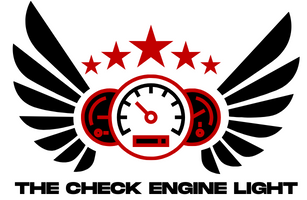

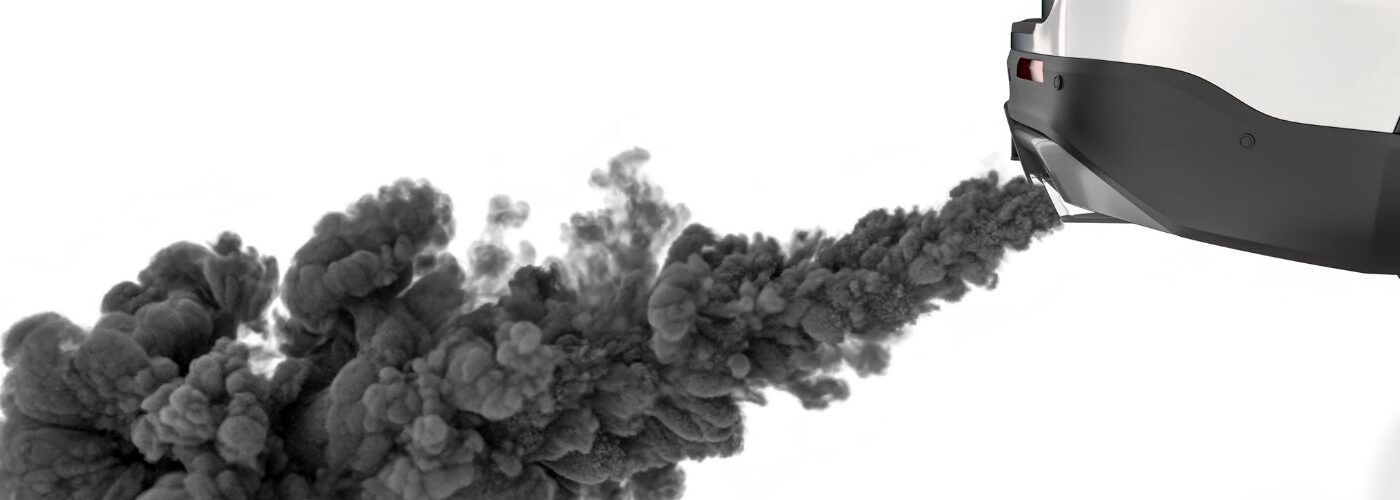
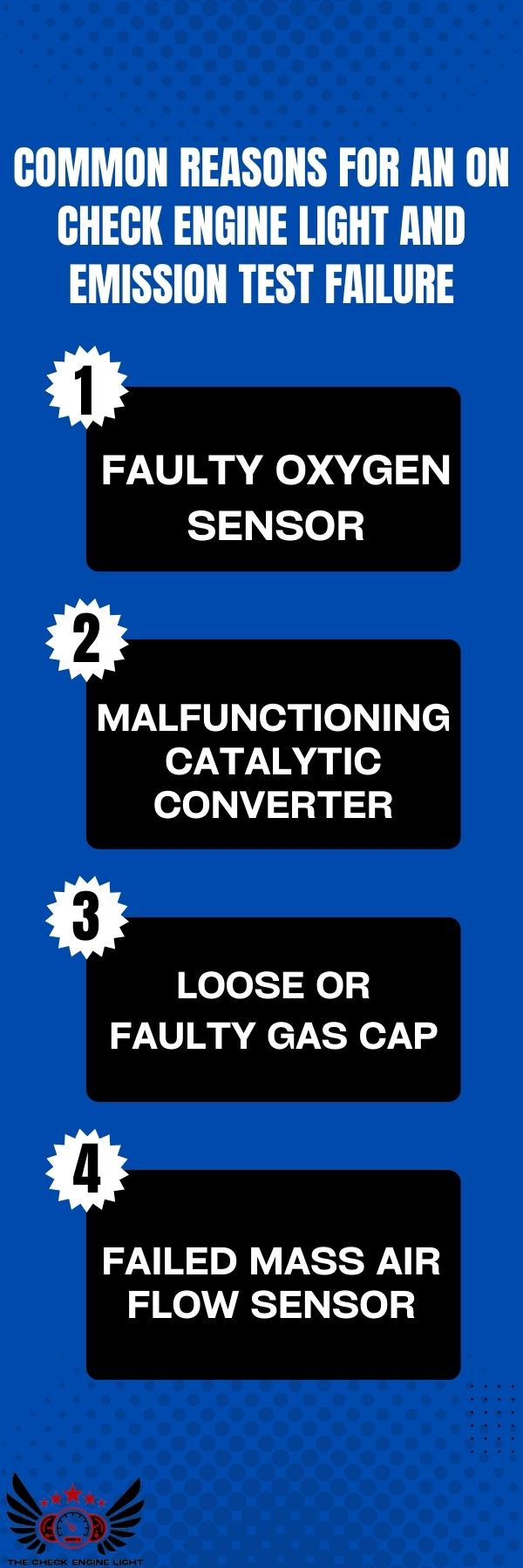
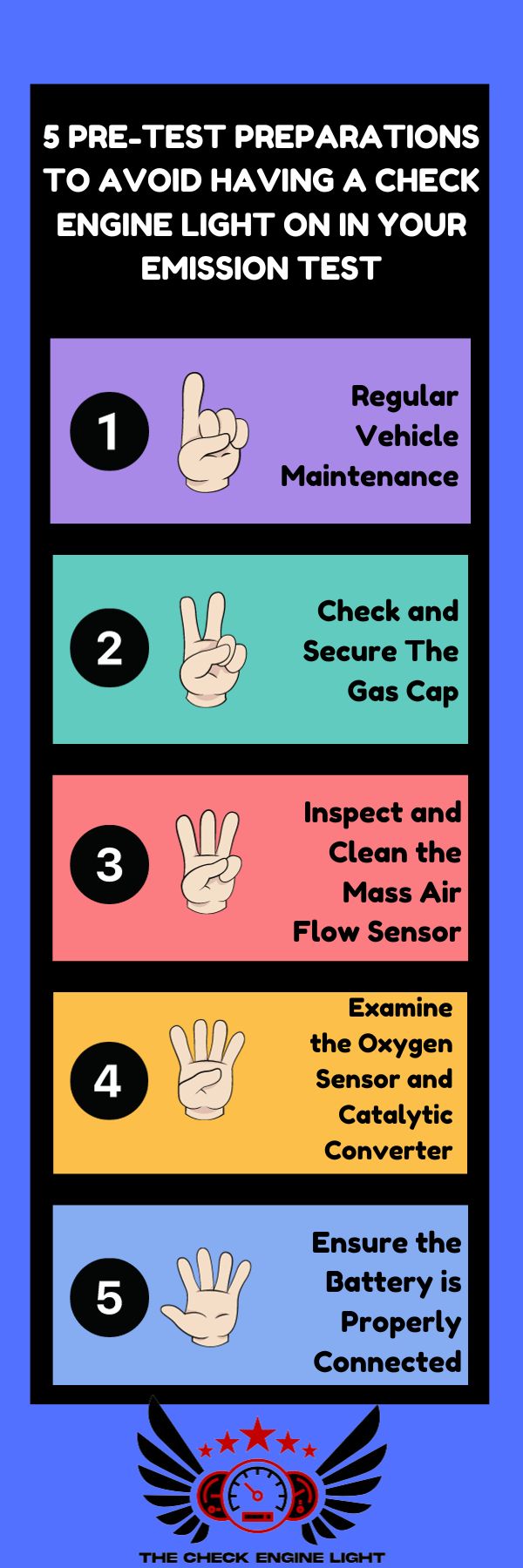
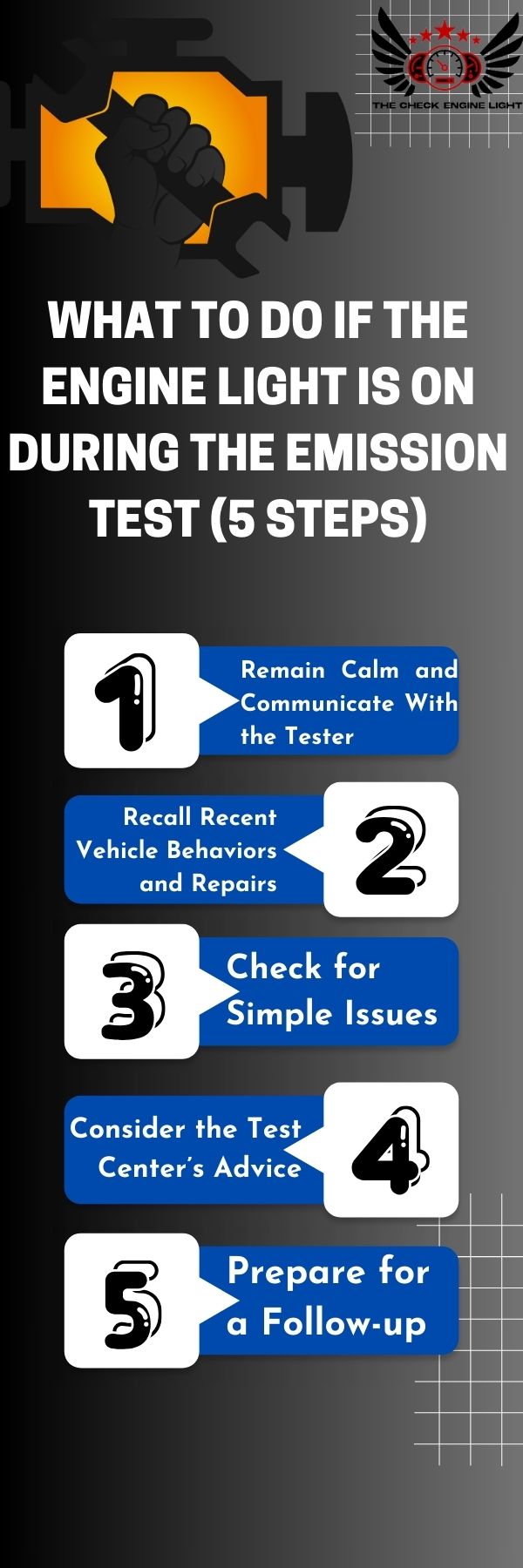
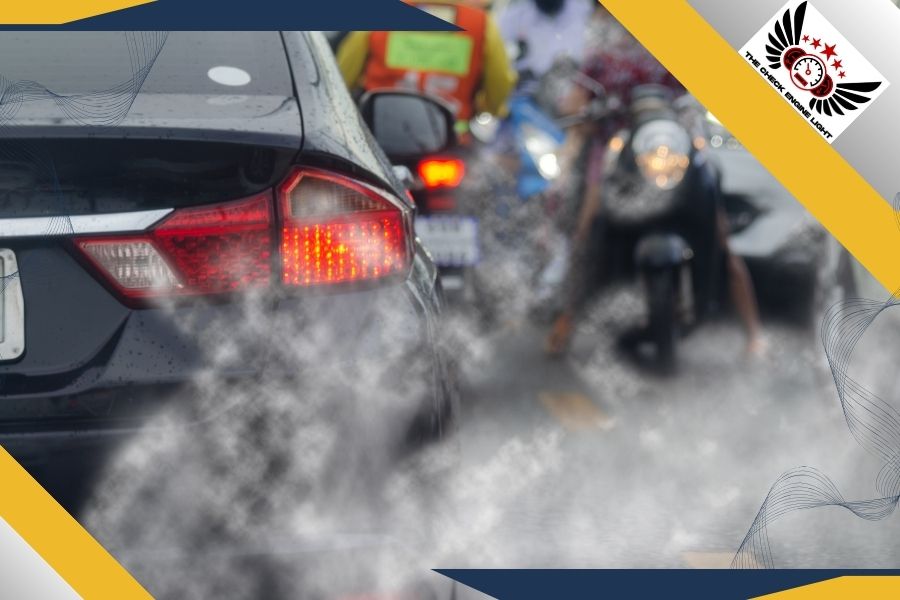
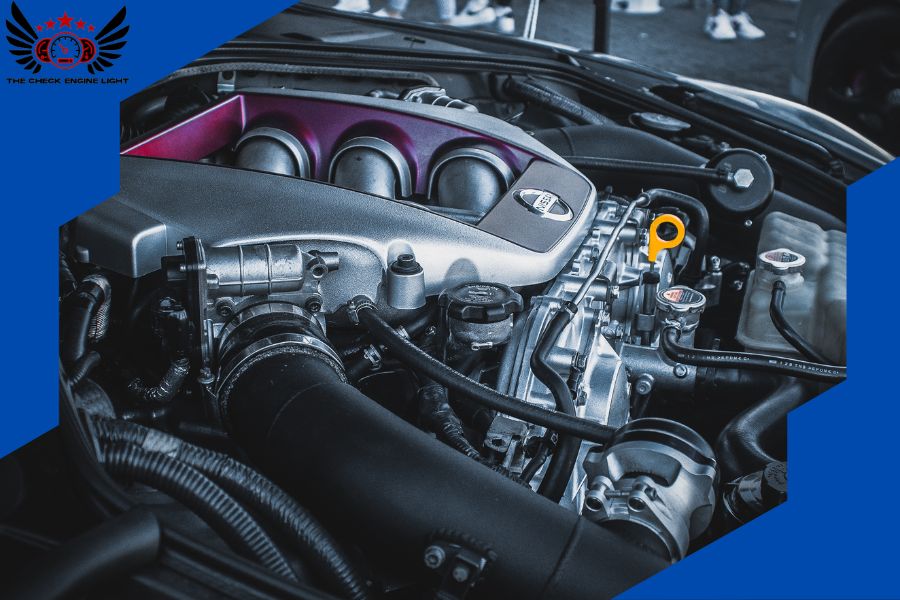
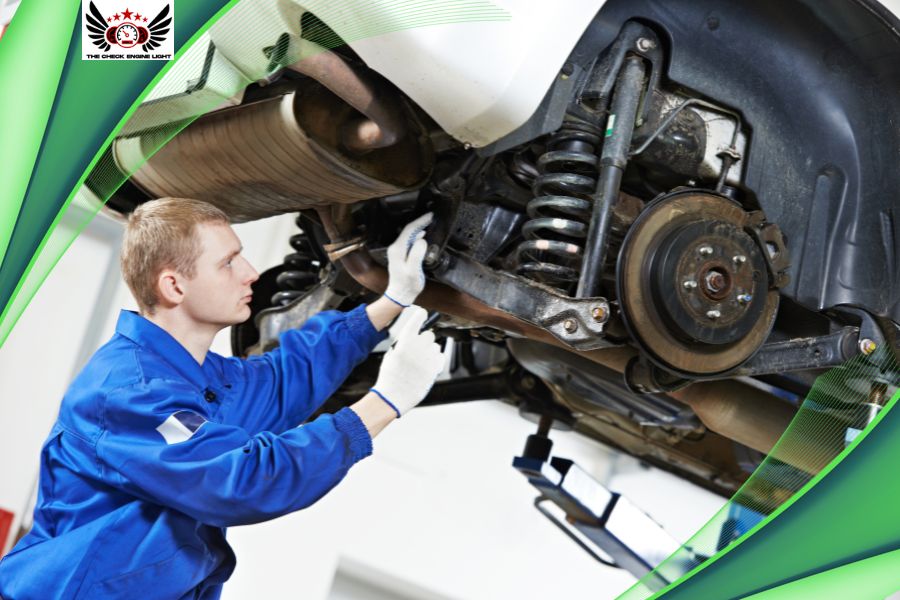
![an pic for Code p0420 Check Engine Light Fully Explained [2024]](https://thecheckenginelight.com/wp-content/uploads/2024/02/Code-p0420-Check-Engine-Light-Fully-Explained-2024-364x225.jpg)
